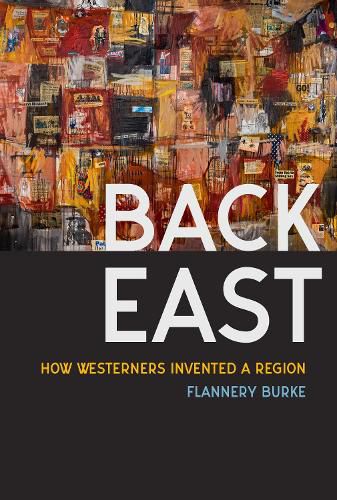Readings Newsletter
Become a Readings Member to make your shopping experience even easier.
Sign in or sign up for free!
You’re not far away from qualifying for FREE standard shipping within Australia
You’ve qualified for FREE standard shipping within Australia
The cart is loading…






Western imaginations of "Back East" rewrote America's cultural identity, shaping myths and realities alike
Just as easterners imagined the American West, westerners imagined the American East, reshaping American culture. Back East flips the script of American regional narratives.
In novels, travel narratives, popular histories, and dude ranch brochures, twentieth-century western US writers saw the East through the lens of their experiences and ambitions. Farmers following the railroad saw capitalists exploiting their labor, while cowboys viewed urban easterners as soft and effete. Westerners of different racial backgrounds, including African Americans and Asian Americans, projected their hopes and critiques onto an East that embodied urbanity, power, and opportunity.
This interplay between "Out West" and "Back East" influenced income inequality, land use, cultural identities, and national government. It fueled myths that reshaped public lands, higher education, and the publishing industry. The cultural exchange was not one-sided; it contributed to modern social sciences and amplified marginalized voices from Chicane poets to Native artists.
By examining how westerners imagined the American East, Back East provides a fresh perspective on the American cultural landscape, offering a deeper understanding of the myths that continue to shape it.
$9.00 standard shipping within Australia
FREE standard shipping within Australia for orders over $100.00
Express & International shipping calculated at checkout
Western imaginations of "Back East" rewrote America's cultural identity, shaping myths and realities alike
Just as easterners imagined the American West, westerners imagined the American East, reshaping American culture. Back East flips the script of American regional narratives.
In novels, travel narratives, popular histories, and dude ranch brochures, twentieth-century western US writers saw the East through the lens of their experiences and ambitions. Farmers following the railroad saw capitalists exploiting their labor, while cowboys viewed urban easterners as soft and effete. Westerners of different racial backgrounds, including African Americans and Asian Americans, projected their hopes and critiques onto an East that embodied urbanity, power, and opportunity.
This interplay between "Out West" and "Back East" influenced income inequality, land use, cultural identities, and national government. It fueled myths that reshaped public lands, higher education, and the publishing industry. The cultural exchange was not one-sided; it contributed to modern social sciences and amplified marginalized voices from Chicane poets to Native artists.
By examining how westerners imagined the American East, Back East provides a fresh perspective on the American cultural landscape, offering a deeper understanding of the myths that continue to shape it.